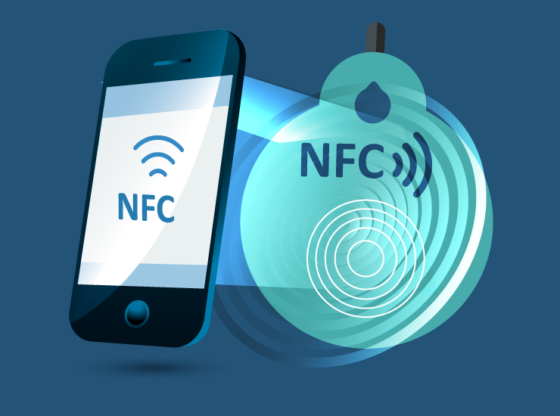Near Field Communication, better known as NFC, is a technology that is making mobile devices smarter and reliable. The fact that this innovation provides a safe and secure channel for communication makes it empower other technologies.
These days, most smartphones and electronic gadgets come with an NFC-based feature that creates ease-of-use and a smooth user experience. Due to the rapid surge in digital solutions, it has become increasingly important to know about the use and working of those devices working with NFC technology.
What is NFC Technology?
NFC technology allows two devices to communicate and exchange data with a single tap. Even though it looks like this is something new, NFC technology has been around for quite some time now. Over the years, it has evolved as a quick and reliable method to perform efficient operations.
NFC technology uses the basic concept of RFID (Radio Frequency Identification) that uses radio waves to transmit data in a particular area. Its working is similar to other forms of wireless innovations that we use these days, like Wi-Fi or Bluetooth.
NFC can offer secure data transfer, but for that, it must function with devices in proximity. Since information sharing is possible using a tap between the source device and the receiver, it reduces the chances of connecting with the wrong recipient. Since it offers a touch-based solution, NFC is gaining popularity in the digital payments and identity verification industry.
How Does NFC Work?
NFC is no different from the current wireless technologies we use, using electronic waves to exchange data and information. Considering its operational mechanics, NFC is another method to initiate wireless data transfer – but more quick and secure.
The devices exchanging data must be as close as four inches to enable communication. Built on the same concept of RFID technology, NFC uses electromagnetic induction principles to generate radio waves to send and receive data.
NFC-compatible devices need to enable a direct interaction mode (peer-to-peer) to determine what kind of data is transferred. The process is quite simple: While a device is sending data, it should be in an active mode; on the other hand, when receiving data, the devices should be switched to passive.
Significance of NFC Technology
Today’s high paced world is full of digital-only solutions. There was a time when credit cards replaced physical cash, whereas now, payment cards are also becoming old-fashioned. Mobile payments have taken over to pay through your smartphone without having to carry your card everywhere.
In this regard, it wouldn’t be wrong to say that NFC-enabled transactions will have a staggering increase in the coming years. According to the researchers, at the end of the 2025 the NFC technology market will generate up to 34.9 billion USD.
With the rise in demand for NFC-based solutions, m-commerce is also taking a new turn while keeping intact customer privacy. All the customer needs to do is hold their mobile device right next to a check-out counter at the mall or shopping centre, and they can make payments using the tag code sent to them.
Moreover, it is also being adopted for identity verification of users, allowing businesses to offer convenient and secure services.
How is NFC Verification Bringing Innovation?
Without a doubt, technology has its benefits as well as drawbacks. When any new technology invented for security purpose; the hackers use the same technology to exploit the identity of users. By using sophisticated ways to deceive security checks, fraudsters are posing a serious challenge to businesses.
NFC identification solutions are one robust method to verify individuals and prevent criminals from bypassing identity verification protocols.
When we talk about synthetic identity fraud, NFC identification is particularly helpful. This helps distinguish between fake and forged IDs and legitimate ones by verifying personally identifiable information from the NFC chip on documents.
Although this type of fraud is quite difficult to detect using standard methods. The NFC-based document verification checks are foolproof since the NFC chip’s data cannot be altered or deleted.
Nowadays, to make identity verification even more secure, businesses can pair biometric authentication with NFC technology. This additional security layer guarantees the user who claims to be and not another cyber actor looking to outsmart the system.
This could bring innovation in the financial industry where insurance firms, fintech, and banks can make sure they are dealing with the right customers.
To Wrap it Up…
- NFC technology is becoming popular because of its ability to initiate safe and secure communication for data transfer
- Quick, reliable, and smooth information sharing between NFC-compatible devices.
- NFC technology uses the famous RFID technology principles to exchange data
- To fight against financial and identity fraud; NFC identification services are more preferable.

